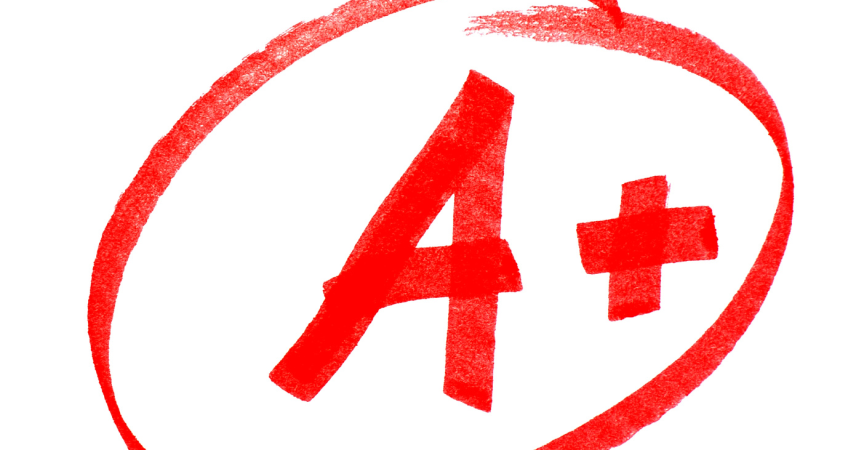
Are you looking for writers who can help with law assignments? At prolificresearchpaperwriters.com we have qualified law paper writers at your beck and call to ensure that our clients get the quality law/legal assignments. If you have a law assignment that is giving you a hard time, you can contact our law assignment experts by emailing us, visiting our live chat, and Whatsapp.
Sample Law Assignment on Agency and Employment Law
Purpose of Assignment
Employment costs are arguably a business’s biggest expense. Consider how employment law regulates concepts such as discrimination, injuries on the job, employee vs. independent contractor, wrongful discharge, and unionization, to name a few. As you research for this assignment, consider the decisions made in this area are much more than business decisions but, in fact, impact lives. How do we reconcile between hurting employees and impacting the bottom-line? This is much tougher than it appears.
Assignment Steps
Resources: Legal Environment of Business: Online Commerce, Business Ethics, and Global Issues: Ch. 18, 19, 20, and 21.
Scenario: As employment costs continue to escalate, it is incumbent upon organizations to continually monitor its internal operations to ensure best practices are being followed. To that end, your CEO has asked you to prepare a SWOT (Strengths, Weaknesses, Opportunities, Threats) analysis.
Prepare a SWOT analysis in one of the following formats:
- A maximum 825-word written analysis in Microsoft® Word.
Examine the following:
- Consider the impact a principal and agent creates on the business and its employees.
- Compare how express, implied, and apparent authority created by the principal and agent impacts equal opportunities for employees.
- Identify the laws protecting workers against discriminatory practices.
- Evaluate how the legal protections present in the workplace differ for employee and independent contractors.
Answer
Agency and Employment Law
Employment costs have increased in different parts of the globe. In the United States, a 0.6% rise in the costs was noted in the third quarter of the year 2015. This was associated with a 0.6% increment in wages and salaries and 0.5% rise in benefits (Davidson, 2015). Organizations should continually monitor their internal operations and adopt best practices to minimize such costs.
The Impact of a Principal and Agent on Business and its Employees
Principals and agents are usually guided by fiduciary relationships whereby the later acts on behalf of the former. Markedly, the agent negotiates and transacts business with third parties. The principal-agent relationship occurs when an employee is hired and acquires the authority to enter into contracts on behalf of the employer (Cheeseman, 2014). The key strengths that are associated with this relationship is that employers gain some level of control over the business operations as they are assured that the employee will be available for a specified period. This is advantageous unlike when dealing with independent contractors who may not be available to handle time-sensitive tasks. Moreover, businesses get an opportunity to tailor employee training according to their specific needs or practices. This enhances their performance abilities leading to efficiency and effectiveness (Pearson, 2017). The arrangement also confers benefits to employees since they are compensated for their time and performance. Besides, they are reimbursed for any expenses that are incurred when performing tasks that are authorized by their employers or those within the scope of agency (Cheeseman, 2014). However, the employers pay the workers’ social security contributions as well as withholding federal, state, or local taxes. Employees have to be given benefits such as health insurance and time paid off which increases the business expenses.
Impacts of Express, Implied, and Apparent Authority on Equal Employment Opportunities
Express authority is attained where the principal clearly outlines the activities that the agent should accomplish. Implied authority is not specifically expressed in writing but involves scenarios where the agents do what is reasonably necessary to accomplish their duties. Apparent agency occurs when a principal fakes the existence of an agency (Cheeseman, 2014). Express and implied authorities do not impact negatively on equal employment opportunities since they are founded on existing opportunities. For instance, an organization commissions its employees to accomplish the tasks that are outlined in their job descriptions through express authority. However, the employees have to use implied authority to do whatever is reasonably acceptable to achieve their goals. They are also compensated for their efforts implying that they experience gainful employment. Conversely, apparent authority has a negative implication on equal employment opportunities since the activities undertaken under such terms are not legally binding. Employees may not have access to the benefits that arise from employment due to the shady nature of apparent authority. This is an inherent weakness in such agency agreements and a threat to equal employment opportunities.
Laws Protecting Workers against Discriminatory Practices
There are several federal laws that protect employees from discrimination. For instance, Lilly Ledbetter Fair Pay Act of 2009 empowers workers to sue their employers for paycheck violations within 180 days after their occurrence. The Civil Rights Act of 1866 gives equal contractual rights to citizens, thereby, prohibiting racial discrimination in employment (Cheeseman, 2014). Additionally, gender discrimination is prohibited through the Pregnancy Discrimination Act which prohibits employers from treating female workers differently due to pregnancy, childbirth, or medical conditions arising from these factors. Title VII of the Civil Rights Act of 1964 discrimination of workers on the basis of race or religious beliefs (Cheeseman, 2014). Organizations are required to accommodate their employees’ religious beliefs as long as they do not negatively affect the employer. Besides, the Equal Pay Act protects workers from gender-based discriminatory practices in relation to compensation for equal skill, responsibility, and working conditions. Older employees are also protected from discrimination through the Age Discrimination in Employment Act and Older Workers Benefit Protection Act. Persons with disabilities are protected by Americans with Disabilities Act which prohibits employers from discriminating such individuals who are rightfully qualified for job opportunities (Cheeseman, 2014). Besides, prejudice against such persons during compensation, training and development, promotion, as well as termination is prohibited.
Differences in Legal Protections for Employees and Independent Contractors
Independent contractors are employed on a casual basis by businesses and individuals. Their work arrangements are founded on either oral or written agreements. Independent contractors have an obligation to complete their responsibilities as outlined by their agreements with businesses. However, they do not have access to many legal protections compared with employees (FindLaw, 2017). For instance, they have to pay and file their taxes as firms do not withhold them. Independent contractors do not have a right to unemployment and worker compensation benefits unlike employees. Besides, their work relationship can be arbitrarily terminated unless specified otherwise in a contract. Independent contractors are not eligible for compensation for working overtime hours. They are not covered by employment anti-discrimination and workplace safety laws that normally protect employees (FindLaw, 2017). Moreover, they cannot join unions while employees can form unions to facilitate collective bargaining.
Conclusion
Employers can choose to work with employees or independent contractors. Either decision is associated with benefits and disadvantages. Employees enjoy more legal protections compared to independent contractors. However, organizations may incur more costs in training employees. Using employees gives employers more control over the work relationship unlike when dealing with independent contractors. Organizations should focus on ensuring that their employment practices align with the outlined legal protections to minimize the associated costs.
References
Cheeseman, H. R. (2014). The legal environment of business and online commerce: Business ethics, e-commerce, regulatory, and international issues. Upper Saddle River, N.J: Pearson/Prentice Hall.
Davidson, K. (2015). U.S. employment costs rise 0.6%, suggesting new wage pressure: Update. CC Commodity Info Services LLP. Retrieved from www.commoditiescontrol.com/commodity-market/dowjonescommoditiesnews/us-employment-costs-rise-06-suggesting-new-wage-pressure-update-20151030DN009031.html
FindLaw (2017). Being an independent contractor vs. employee. FindLaw. Retrieved from http://employment.findlaw.com/hiring-process/being-an-independent-contractor-vs-employee.html
Pearson, O. (2017). Advantages and disadvantages of hiring an employee. Chron. Retrieved from http://smallbusiness.chron.com/advantages-disadvantages-hiring-employee-18966.html
If you need such a law assignment on any topic done on your behalf, we are the right law paper writing service to help you. Our quality is unmatched and our prices are sensitive to our client’s student status. Contact us and you will not regret.






 It is almost impossible to pursue any form of formal education without having to work on an assignment at one point or the other. Students pursuing a course in marketing are no exception as they are expected to work on various tasks. Would you like to get quality
It is almost impossible to pursue any form of formal education without having to work on an assignment at one point or the other. Students pursuing a course in marketing are no exception as they are expected to work on various tasks. Would you like to get quality 
 Writing a
Writing a 
 More often than not students are asked to come up with a midterm project by their course instructors to test how good they have understood the various concepts that have been taught in class. Coming up with an impressive
More often than not students are asked to come up with a midterm project by their course instructors to test how good they have understood the various concepts that have been taught in class. Coming up with an impressive 
 The basic aim of literature review is to provide a brief overview of the various current studies that are relevant to your topic. Reviewing the existing relevant literature among other things also helps you to explain the importance of your study. In other words, justification of your study is facilitated by reviewing the literature that is related to your work. Moreover, literature review helps students and researchers alike to identify areas of study that are in need of further research.
The basic aim of literature review is to provide a brief overview of the various current studies that are relevant to your topic. Reviewing the existing relevant literature among other things also helps you to explain the importance of your study. In other words, justification of your study is facilitated by reviewing the literature that is related to your work. Moreover, literature review helps students and researchers alike to identify areas of study that are in need of further research. It is worth to note that it is of paramount importance to properly reference your literature review. Specifically, you are supposed to fully and properly acknowledge all the sources of the information as failure to do so would amount to plagiarism. It is mandatory to include a list of references at the end of your literature review. You should however check with your course instructor when writing this list as there a number of conventional referencing styles that one can use when writing a literature review. If there is a clarification that you would like made or any query in relation to how you can conduct a literature review, then we would be glad to hear from you.
It is worth to note that it is of paramount importance to properly reference your literature review. Specifically, you are supposed to fully and properly acknowledge all the sources of the information as failure to do so would amount to plagiarism. It is mandatory to include a list of references at the end of your literature review. You should however check with your course instructor when writing this list as there a number of conventional referencing styles that one can use when writing a literature review. If there is a clarification that you would like made or any query in relation to how you can conduct a literature review, then we would be glad to hear from you.
 Above all else, in order to
Above all else, in order to 
 To start with, there are various types of essays. These among others include but not limited to: persuasive, argumentative, analytical, expository, compare and contrast, cause and effect, narrative and descriptive essays. It is therefore important to know the type of essay that you are dealing with even before you start the writing process. This is because different types of essay have different formats of writing.
To start with, there are various types of essays. These among others include but not limited to: persuasive, argumentative, analytical, expository, compare and contrast, cause and effect, narrative and descriptive essays. It is therefore important to know the type of essay that you are dealing with even before you start the writing process. This is because different types of essay have different formats of writing. Finally, some of the quick essay tips that can help you in
Finally, some of the quick essay tips that can help you in